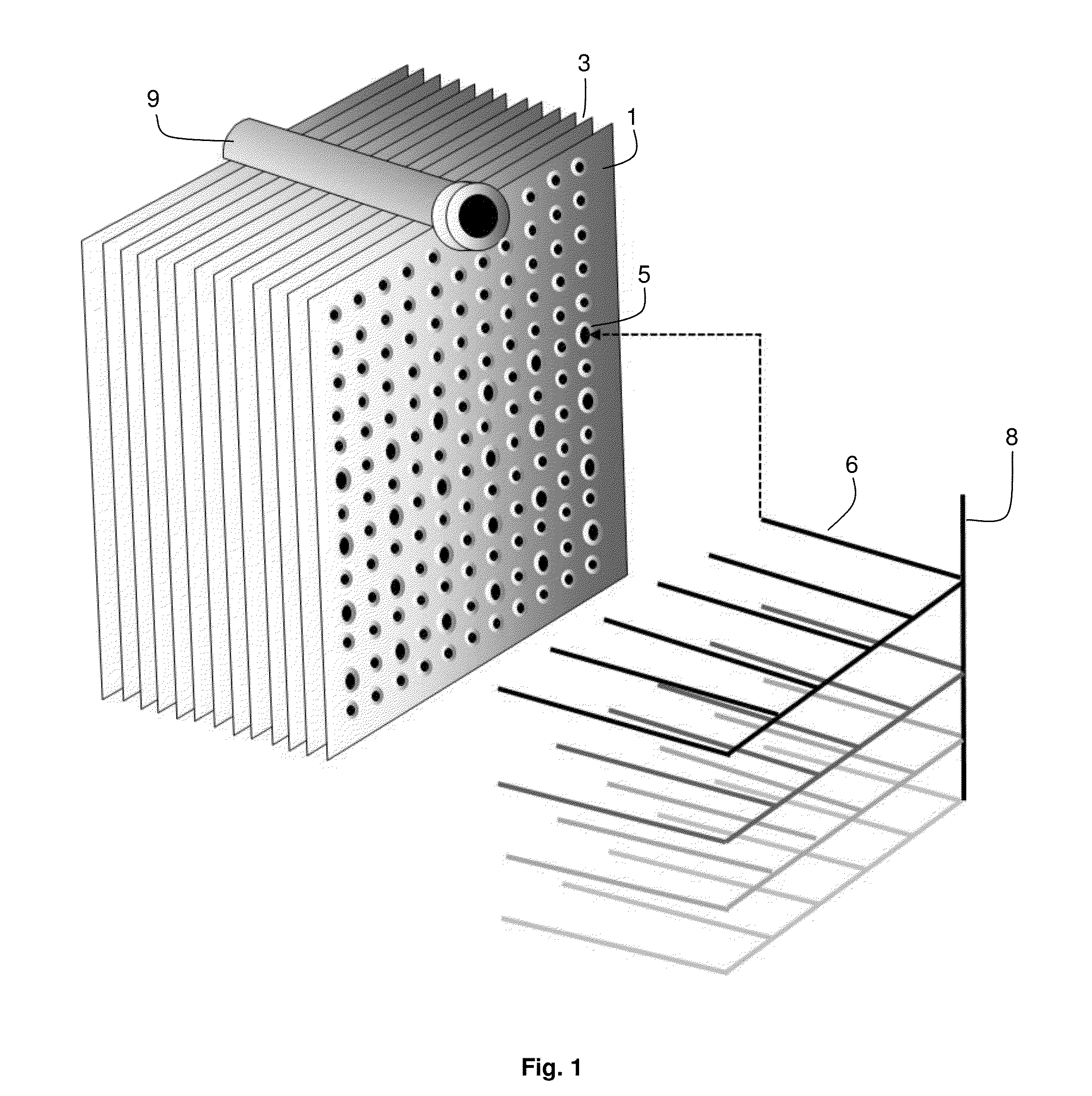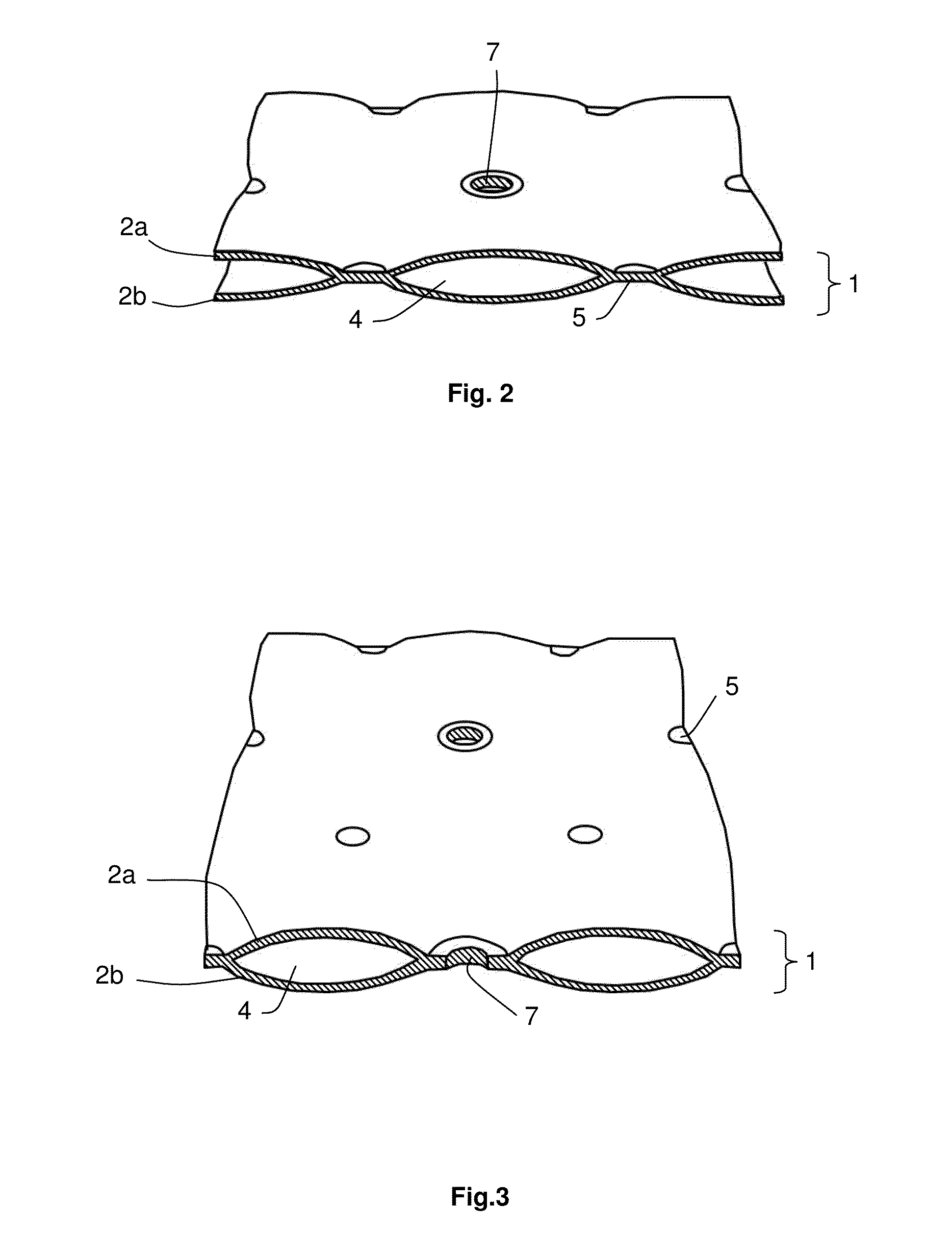Plate-type reactor with in-situ injection
- Summary
- Abstract
- Description
- Claims
- Application Information
AI Technical Summary
Benefits of technology
Problems solved by technology
Method used
Image
Examples
Embodiment Construction
[0040]The invention is now described in more detail and without limitation in the description which follows.
General Description of the Reactor
[0041]With reference mainly to FIGS. 1 and 4, generally, the reactor according to the invention comprises a chamber, which is advantageously essentially cylindrical with a circular section, inside which is positioned an assembly of heat-exchange plates 1 delimiting, between them, reaction compartments 3.
[0042]The reaction compartments 3 are advantageously filled with a catalyst appropriate for the reaction carried out, this catalyst preferably being in the form of solid particles (beads, grains or powder) or in the form of porous monolith or of blocks of porous monolith.
[0043]The reactor can operate according to at least two modes, namely a production mode, during which the targeted chemical reaction takes place in the reaction compartments; and a regeneration mode, during which the at least partially deactivated catalyst is regenerated.
[0044]...
PUM
 Login to View More
Login to View More Abstract
Description
Claims
Application Information
 Login to View More
Login to View More - R&D
- Intellectual Property
- Life Sciences
- Materials
- Tech Scout
- Unparalleled Data Quality
- Higher Quality Content
- 60% Fewer Hallucinations
Browse by: Latest US Patents, China's latest patents, Technical Efficacy Thesaurus, Application Domain, Technology Topic, Popular Technical Reports.
© 2025 PatSnap. All rights reserved.Legal|Privacy policy|Modern Slavery Act Transparency Statement|Sitemap|About US| Contact US: help@patsnap.com



